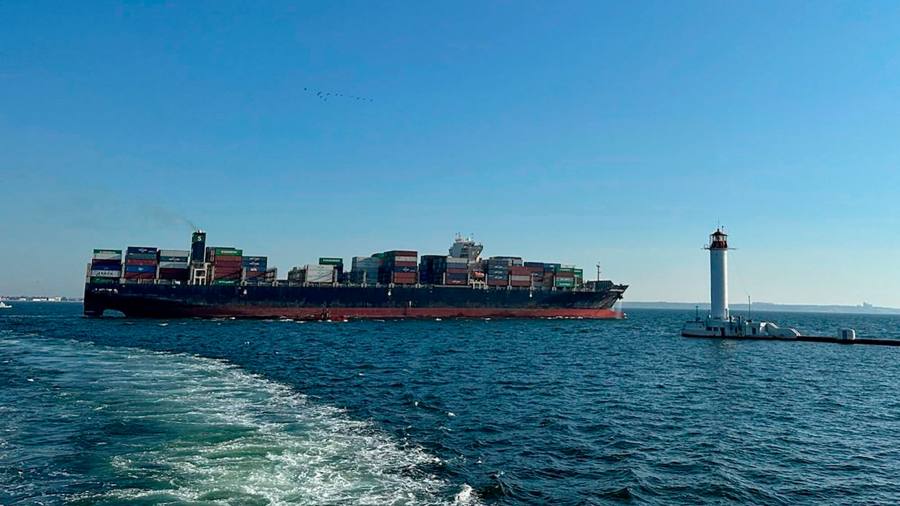Receive free War in Ukraine updates
We’ll send you a myFT Daily Digest email rounding up the latest War in Ukraine news every morning.
The writer is a non-resident scholar at the Carnegie Endowment for International Peace Eurasia Center, Berlin
Since Russia’s invasion of Ukraine last February, Moscow has succeeded in significantly limiting Kyiv’s maritime trade. The Kremlin had tried to offer an easing of the blockade on Ukrainian ports as a bargaining chip with the west in exchange for partial lifting of sanctions. Unable to secure anything tangible, last month Russia withdrew from the grain deal brokered a year earlier and began bombing Ukraine’s ports, trying to destroy the country’s grain export capacity altogether.
A few days later, Ukraine used sea drones to attack two Russian vessels in the Black Sea, declaring Russia’s Black Sea ports a “war risk area”. The aim is to reduce Russia’s own exports — above all, oil — by forcing insurance companies and ship owners to stop vessels from operating on those routes.
Ukraine is trying, meanwhile, to end the blockade by inviting to its ports vessels sailing under the flags of countries that it believes Russia won’t dare attack. One part-German-owned vessel made it out of Odesa this week on its way to Istanbul.
Ukraine probably hopes that an attack on a Nato member-flagged vessel would be seen as an act of aggression, triggering Nato’s Article 5, which states that an attack on one member is an attack on all members. A direct conflict between Nato and Russia is not what Moscow wants, while Ukraine would be glad to see direct Nato involvement.
This is all very reminiscent of the “tanker war” that lasted from 1984 to 1988 during the Iran-Iraq war, as both sides tried to stop each other’s oil trade by attacking tankers heading for the enemy’s ports — including vessels sailing under the flags of several Nato countries such as the UK and the US. Several dozen commercial vessels were damaged, even a US navy frigate.
At the time, despite the risks of entering the Gulf, there was no shortage of vessels willing to sail there for oil. Insurance companies continued to provide cover, albeit at increased costs. None of the Nato countries whose vessels had been attacked tried to invoke Article 5.
In the current conflict, attacking tankers in the Black Sea runs the risk of oil spills and significant ecological damage for all the littoral states, including Ukraine. This may give Kyiv pause.
There is, however, another way of stopping exports from Russian Black Sea ports: attacking oil terminals, primarily the two in the sea port of Novorossiysk. The first, Sheskharis, is located inside Novorossiysk harbour, which would make an attack from the sea relatively difficult.
The second terminal, Yuzhnaya Ozereyevka, operates from moorings several miles out to sea, where tankers dock. Those are vulnerable to attack and harder to repair. But they are used to export oil produced in Kazakhstan: attacking them would mainly inflict damage on western oil companies working in Kazakhstan.
In the event of Novorossiysk exports grinding to a halt, Russia would need new routes for its oil. That would be easier for crude, export volumes of which had been falling even before Russia started limiting production as part of the recent agreement with Opec+.
Russia’s Ust-Luga oil port on the Baltic Sea has the capacity to handle Novorossiysk’s volumes, though it would lengthen the journey for Russian oil headed for India and China and make shipments to Turkey far less profitable.
Rerouting exports of Russian oil products would be more painful. Since an EU embargo came into force this February, their main markets have been countries in the Mediterranean and Africa. It would also create problems for Bulgaria and Romania, for whom Russian oil was deemed so vital that they were exempted from the embargo.
If Ukraine succeeds in forcing Russia to reroute its exports via the Baltic Sea, it will mean losses not only for Moscow but also for its customers — including major developing countries and some of Ukraine’s own allies.
Read the full article here



